Ableton co-creator Robert Henke: “It’s clear that AI will change a lot of things in the music industry… We are looking at ways to incorporate that into our workflow in a way that’s inspiring, beneficial and interesting”
Henke talks us through the new Monolake album Studio and weighs in on the future impact of AI on music-making
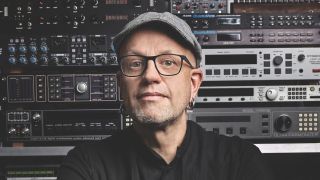
Born in Munich to a family of engineers, it was only natural that Robert Henke would someday combine his passion for audio-visuals, computer graphics and music production and become a technology toolmaker.
Whilst studying programming at Technische Universität Berlin, Henke teamed up with Gerhard Behles. The duo founded the minimal techno project Monolake in 1995 and also began using the music programming language Max, which would later go on to provide a prototype for the duo’s own music making software – Ableton Live.
25 years later and Henke continues to shape Ableton whilst working on various audio-visual installation projects and lecturing on sound and the creative use of computers at European universities.
Now in sole control of Monolake, he has also found time to focus on creating a 10th LP, the aptly titled, Studio. Perhaps surprisingly, we find that Henke is not wholly reliant on Ableton to instigate the creative process, preferring to source sounds from his beloved collection of hardware synthesizers and effects units.
What lay behind your initial interest in developing a piece of custom-built software that people could make music with?
“I was torn between two seemingly separate worlds – the world of engineering, which is my family background, and the artistic mind-set that I noticed very early on that also existed in my head. For a long period I thought that I’d have to decide which side I belonged to until I figured out that this thinking is very flawed because if you’re a good engineer you have to be creative and make beautiful things. As an artist, if you take your work seriously then you think about it and develop routines, so there is a lot of engineering and logical thinking in art.
“The reason I started to develop my own products was partially out of necessity. When I was a kid I had a Juno-6, a tape recorder and a Walkman and built a small mixer so I could do overdubbing, then I realised that I could add more stuff to make it more interesting. I was driven by necessity, but whenever I built something, I also noticed that it opened up new doors and I enjoyed the dialogue between inventing something and figuring out that it comes alive by itself because nothing is ever 100% how you envisioned.”
Get the MusicRadar Newsletter
Want all the hottest music and gear news, reviews, deals, features and more, direct to your inbox? Sign up here.
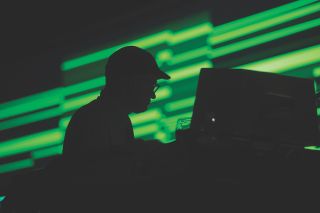
Does making music follow the same train of thought?
“Absolutely – it’s a mix of knowing exactly what I want to do, getting surprised by the results and having the freedom to say, okay, I want to make a second track but this sound in the background is so interesting let’s focus on that and see where it leads me. Whatever we do with art is the result of collaboration. We all stand on big shoulders, so the music I make is the result of all the music I’ve been listening to, the books I’ve read and the discussions I’ve had. It’s also the result of the people who make all of the beautiful tools that I’m using to give me inspiration.”
One might imagine the title of the latest Monolake LP, Studio, is related to the environment you work in. Would that be too obvious a conclusion to draw?
“A funny detail is that the font on the LP cover has been used in a lot of old studio equipment and is exactly the same as the legendary remote control for the Lexicon reverb that you saw in every studio in the ‘80s, but if you look closely you’ll notice that the text is slightly broken and some segments are missing. I really like this mix of technical perfection and little errors because that is the part where the technology becomes human again.
“Aspiring for perfection is fine – I don’t know how often I edited tracks to add or remove one bar or make the hi-hat sound less loud, but it’s also clear that it will never be perfect and I find that interesting too. This also happens within software and hardware development – you are fighting for something ideal but must always understand that you’ll never reach it. The interesting question then becomes, how far do you push it, and that’s the story of my life.”
Are you always trying to strike a balance between the human side and the technological side?
“I’m obviously deeply connected to my machines and have a personal relationship with all of them, but then at the same time I’m fascinated by nature and I will always find beauty in this combination. In nature you can find an interesting contradiction going on between repetition and change.
People still play drums. We now see that a human drummer is one thing and a drum computer is different
“For example, a forest has lots of trees, but what makes it beautiful is that every tree you find in there is slightly different. This concept of repeating things slightly differently lies at the core of granular synthesis and the idea of tiny variations repeating is a motive that goes through all of my music. It’s always been a struggle between perfection, repetition and change.”
As the co-creator of Ableton Live, we’d assume you’d love software, but we understand that you actually prefer to source sounds from hardware synthesizers?
“First of all, I am from a generation where making electronic music was always connected with the big studio. I was always looking at photos of Trevor Horn and Jean-Michel Jarre’s studios or the Tangerine Dream stage setup with gigantic towers full of equipment and dreamt of having those machines and being able to make music with them. That’s the nostalgic part – the practical part is that all of these machines have been built by human beings with their own aesthetics, which means that you’re always in dialogue with the creator.”
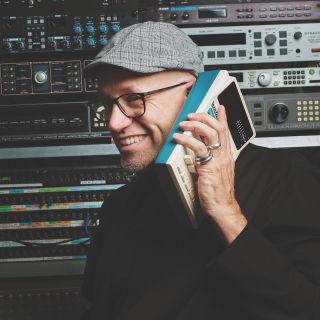
Why is it important to have an emotional dialogue with the creator of a hardware synth?
“I have a PPG Wave made by Wolfgang Palm, which, in some ways, is a very cryptic and reduced machine and not a very elegant instrument, but what he defined was very new. Every detail radiates his personality and aesthetic judgment, so when I play with the PPG I feel the spirit of Wolfgang in the room and that’s inspiring. I choose all of my machines by a very simple metric – does it make me happy when I play them? These machines became my friends.
“If I want to have some nice metallic percussion I go for the Synclavier or if I’m looking for choir-like strings then the Prophet is probably the way to go. From a very abstract, objective perspective I don’t need any of them and could make music in the computer alone, but sitting in this small room surrounded by machines I really like immediately puts me in a happy mental state.”
Is the fact that they’re somewhat limited compared to their software counterparts another important factor?
“That’s another aspect which I believe is essential. All of these machines are reduced and very limited in their scope, which means that you’re not getting forever lost. If I create a drum groove in the LinnDrum I have a fixed set of sounds and cannot change them. The only thing I can do is choose the bass drum, snare, tom and hi-hat and focus 100% on those. If I do the same thing in Live it’s very simple to adjust the decay of the hi-hat, make the snare louder or find a different bass drum, but that moves the focus away from the rhythm. That’s why these older machines help me to be creative – they say, okay, this is what I can offer you, now choose.”
Are you able to immerse yourself in the music-making process without your understanding as a software designer being obstructive?
“Yes and no. When I’m working on a sound, the analytical brain shuts down and I‘m just trying to figure out if it does something to me on an emotional level, then the analytical brain comes back when I feel I want to make a change. I like the fact that, in most cases, if I know what I want I can create it, but these systems are so complex that when you connect a few oscillators and filters it’s impossible to foresee how that will exactly sound, so I’m always being surprised - and if I wasn’t it would be very boring.
We are looking at ways to incorporate [AI] into our workflow in a way that’s inspiring, beneficial and interesting
“The big challenge is that, to a large degree, I’m responsible for decisions at Ableton, so when I’m sitting in front of Live and notice something is getting on my nerves I have to have the discipline to either say ‘stop’ and write down what the problem is or just live with it like I would with any other product.”
In terms of the instrumental techno vignettes that we hear on Studio, are you looking to create something that is emotive and relatable or extraneous and mysterious?
“For me, electronic music was always an escape from reality. As a teenager living in the suburbs of Munich, I was lonely. I listened to stuff like the Alan Parsons Project and that took me to a different world. Going to a dark techno club at night also made me feel that way and I like that music can do this, so if people can enjoy my music and have a nice journey for an hour then I’ve reached everything I was looking to achieve.
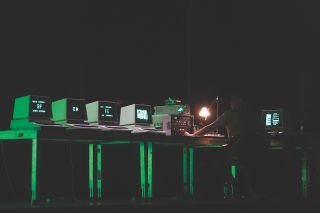
“Every piece of this album has its own genesis and reason for being there and I spent a lot of time trying to shape the album as one big entity, but it’s not a concept album. It’s more than just a collection of tracks, but I just want people to enjoy what they experience and leave it to them how they try to make sense of it. That’s the beauty of instrumental music.”
We’ve discussed how a lot of the sounds you use are hardware-sourced, but what are you using on the software side for processing?
“Live is definitely important and I wouldn’t know what to do without the software because, quite naturally, it does a lot of the things exactly as I wished it would. If not, I make a big fuss [laughs]. I have this luxury of having designed a tool that is very much aligned with how I want to work, but I’m not using a lot of software synths or plugins because I already have so many sound sources here.
“What I am doing a lot is micro editing in Live, for example, arranging individual drum hits, rendering them to another file and then transposing and applying filtering and effects. I use the options that Live gives me in a very creative but not uncommon fashion.”
Can you go into more detail regarding your workflow on this LP?
“My typical workflow is that I start with a sound coming from any of the machines here, typically because I’ve listened to something and been inspired by it. For example, I’ll try to rebuild a bass sound from a track that I thought was nice and of course fail, but on the way I’ll discover something that I really like, record it, put some drums on and suddenly something emerges from that.
“But part of the process is to separate the sound creation from the actual music composition and sometimes I’m in the mood to just explore, so I’ll play with a new synthesiser or machine that I haven’t used for a long time, discover a really nice sound and spend half an hour just recording it as an audio signal into Live. Around 90% of these recordings will be thrown away, but the 10% that’s left might offer a beautiful harmonic progression or interesting percussion and I may even rediscover these 5-10 years later and decide to make a track out of them.”
Are you frequently coming out of Ableton and running sounds through outboard effects units?
“Ultimately, I mix in Live with the mouse so there is no external outboard gear involved in that process. I’ve made music that I really like sound-wise that has been done 100% in a Max patch with the most basic filtering and DSP coding that you can imagine and it still sounds great, and I’ve done stuff with expensive outboard equipment that really doesn’t sound any better. It’s more a question of creative impact.
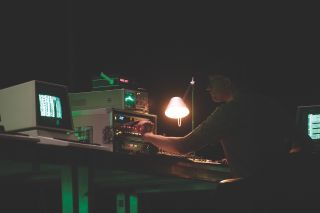
“For example, I recently bought a Solid State Logic bus compressor because I felt I needed a hardware compressor to tame some feedback effects that I’d made. I’m not normally a fan of compressors and didn’t buy it with the idea of needing to compress complex drum patterns, but I actually had a lot of fun doing exactly that.
“The problem was that I had to rerecord it in Live and ended up replacing most of it using Live’s built-in compressor so that I could save the project. What’s interesting is that I needed the experience of compressing outside of Live to get an idea of how to do it in Live, so the inspiration came from the hardware but I learned my lesson and did it in software.”
Do you still have big ideas regarding how a software DAW such as Ableton can evolve into the future?
“We have tons of ideas regarding things we would like to do because our competitors are doing them and the market demands it. Of course, the situation is different nowadays because there’s so much interesting software out there that people have high expectations regarding quality and functionality and it’s become much harder to do something radically new.
“The software is nearly 24 years old now and people have got used to it, so we have to be careful when we change anything not to alienate existing users. In broader terms, it is clear that AI will change a lot of things in the music industry and already has. We are looking at ways to incorporate that into our workflow in a way that’s inspiring, beneficial and interesting. It’s the big development of our times and as important as sampling or the development of laptop computers and will definitely change the way that music is made.”
What aspects of the software industry do you think will be most affected by AI?
“When drum computers came out there was such discussion about drummers losing work and it’s true that a lot of studio session drummers did lose their jobs, but there are still people playing drums and we now understand that a human drummer is one thing and a drum computer is different. The same thing will happen with AI.
“We’ll understand that certain things will be taken over but in 20 or even 50 years people will still like to plug a single oscillator into a filter. The big question is on the professional or marketing side. No human being or orchestra will need to be involved in providing boring background music for a car commercial because all you’ll need to do is type in ‘orchestra score, dramatic, uplifting, 3 minutes 50 seconds, C minor’ and press go.”
The forthcoming Monolake album, Studio, is released September 6 on Imbalance Computer Music. For more information, visit the official Robert Henke website.


Most Popular










![Monolake: Ghosts [HQ/HD] - YouTube](https://img.youtube.com/vi/RUkNWgYvBtA/maxresdefault.jpg)